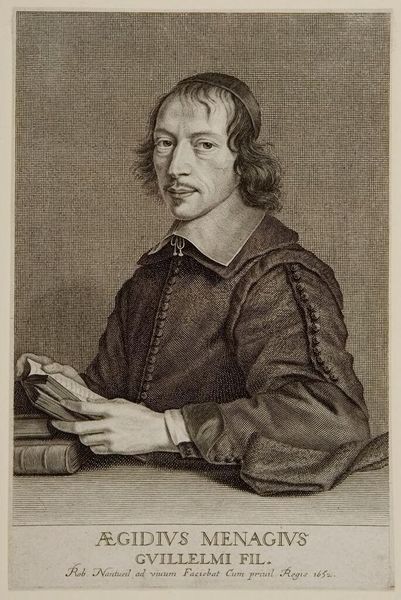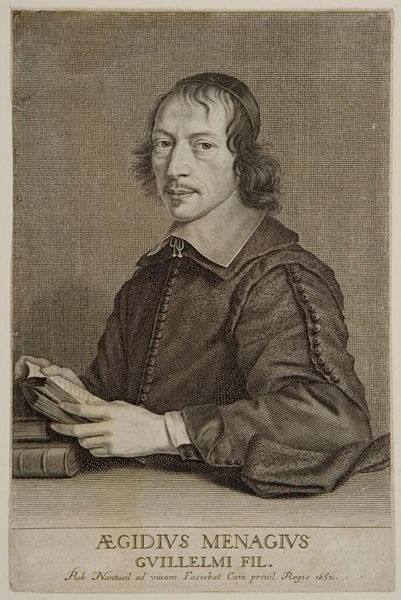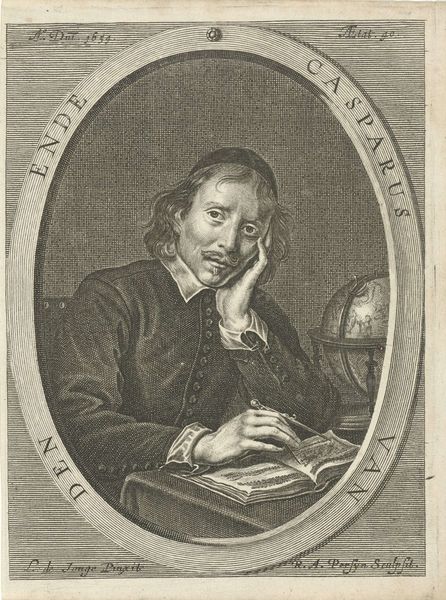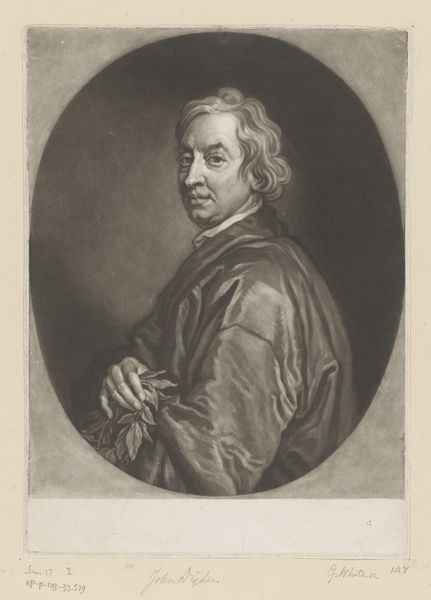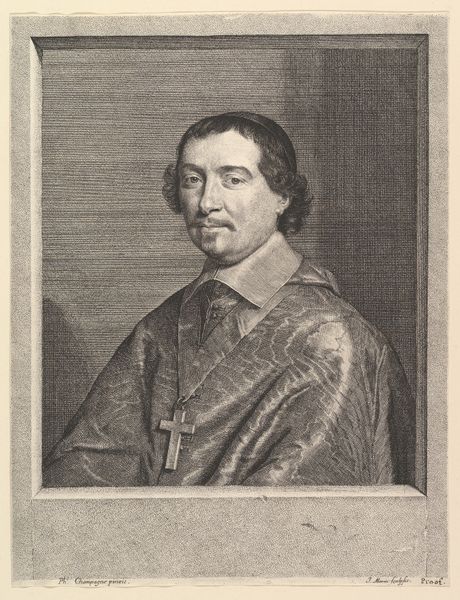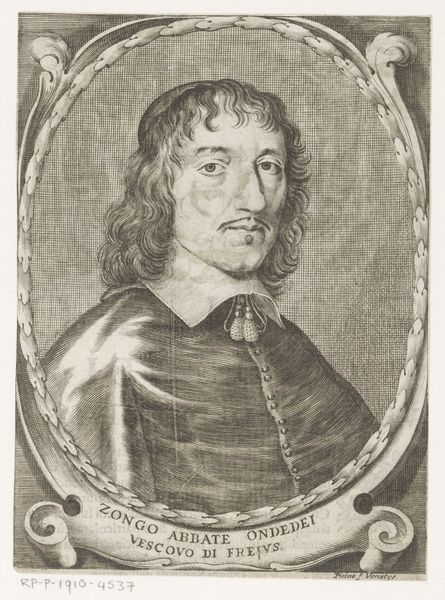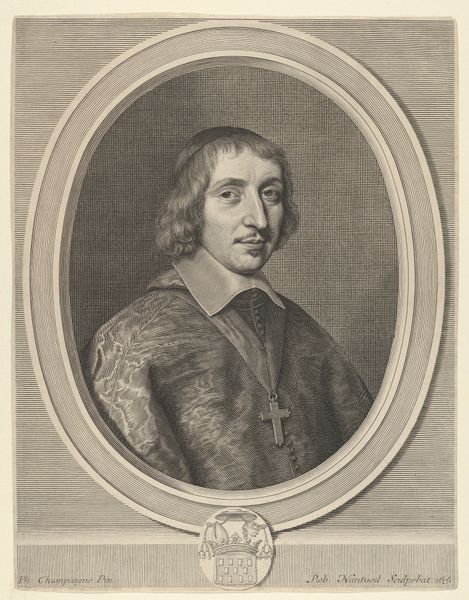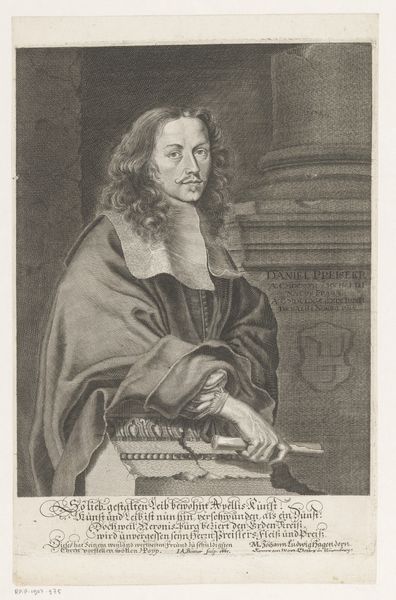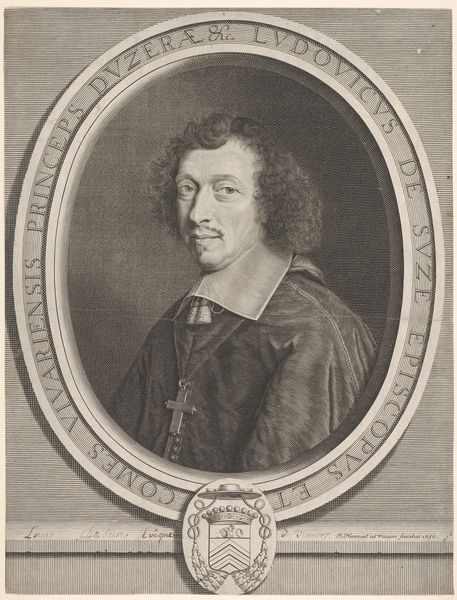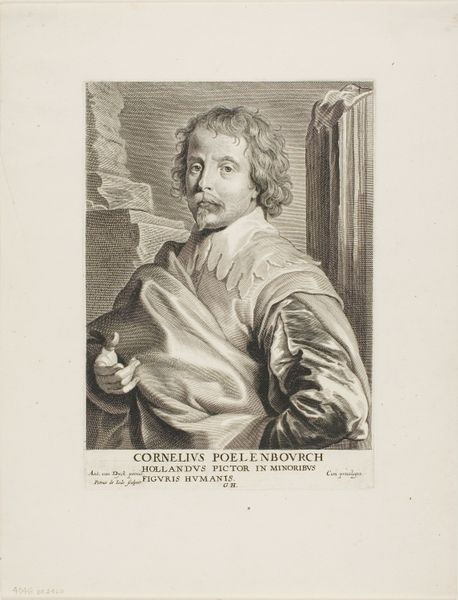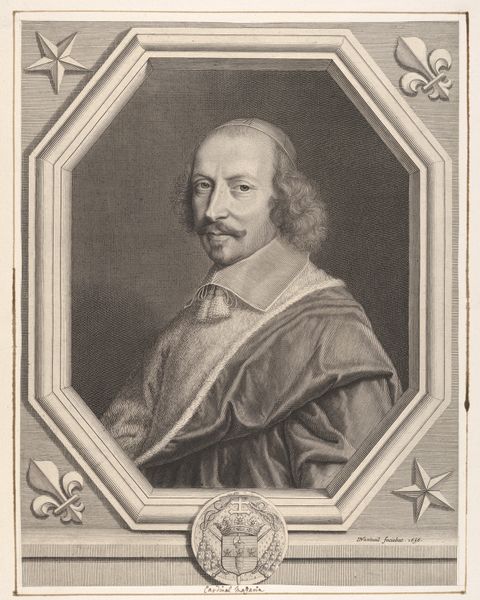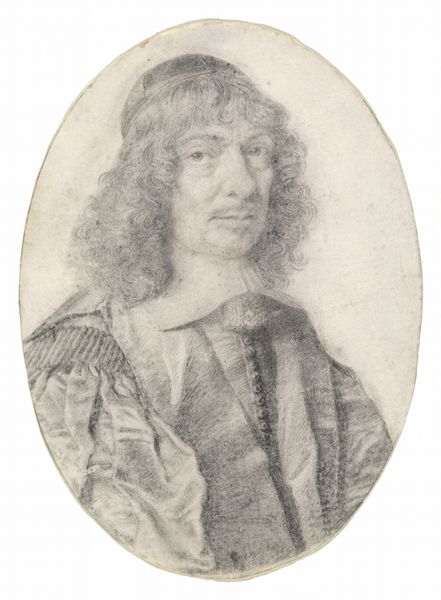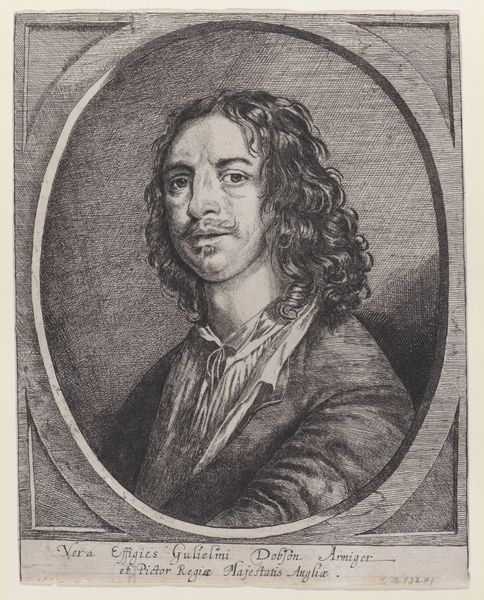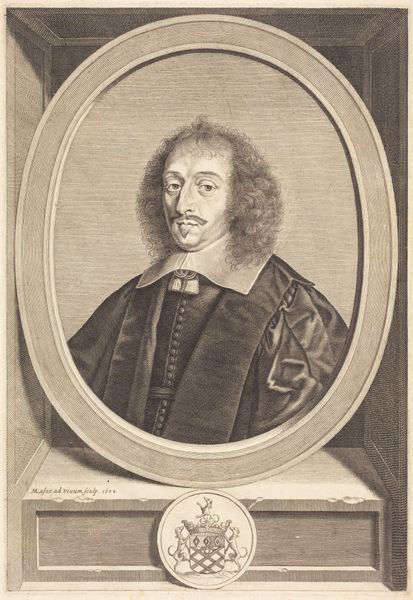
drawing, print, metal, engraving
#
portrait
#
drawing
#
baroque
# print
#
metal
#
men
#
portrait drawing
#
engraving
Dimensions: Sheet: 8 1/2 × 6 in. (21.6 × 15.2 cm) Plate: 7 9/16 × 5 1/16 in. (19.2 × 12.8 cm)
Copyright: Public Domain
Curator: What a meticulously rendered engraving! Robert Nanteuil created this likeness of Gilles Ménage sometime between 1647 and 1657. It's a testament to the precision achievable through metal plate engraving. Editor: My first impression is of thoughtful restraint. The gray scale, while expected for an engraving, evokes a certain scholarly seriousness. It’s more contemplative than celebratory, wouldn’t you agree? Curator: Absolutely. The composition, for instance, relies on balance and quiet observation. The figure of Ménage is centrally positioned, but it's the details of his attire, the subtle gradations in the background, and the text below, that coalesce into an image of intellectual bearing and self-possession. Editor: Tell me more about that inscription. What does it say about Nanteuil's engagement with portraiture during this era? Curator: The inscription dedicates the portrait, identifying Ménage and noting that Nanteuil drew him from life, under royal privilege around 1652. The claim that Nanteuil worked ad vivum underscores the work's representational purpose, but the artist transforms mere visual record into something expressive of Ménage’s status within a particular cultural moment. It speaks volumes of the subject's identity as one validated by association with the Crown. Editor: I'm also drawn to how Ménage is depicted with a book in hand—an object acting almost as a character in the work. It reinforces a kind of constructed identity through symbolic props, typical of official portraits produced during the Baroque era. The books act not just as decoration but also highlight Ménage's literacy and cultural role. Curator: Precisely. Notice, too, the layering of forms: the books, the hands, the carefully patterned texture of his robe, all arranged to create an image that encourages careful, sustained looking. The artist wants you to study the textures in this. This is why the artist provides such detail. Editor: I can definitely agree with you on that. Curator: Considering the piece as a whole, Nanteuil invites a deeper appreciation for how social positioning shapes self-presentation through visual culture. Editor: And on my end, focusing on the artwork itself—on how those textures and details play off against the restrained palette—reveals a consciousness aimed to elicit contemplation about this historical person and moment.
Comments
No comments
Be the first to comment and join the conversation on the ultimate creative platform.
